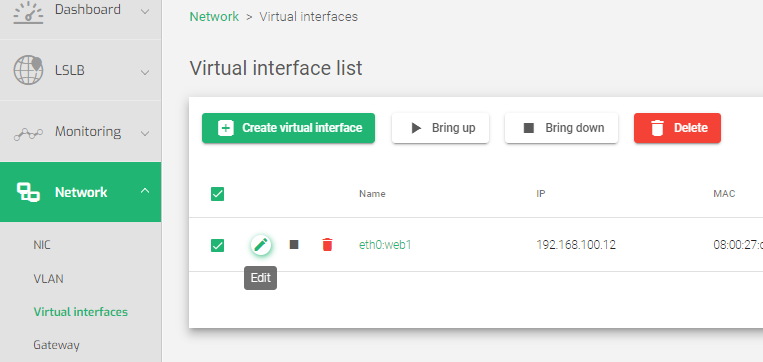A virtual interface is a logical interface that can be created on top of a physical network interface card (NIC) or VLAN interface. Virtual interfaces allow you to assign multiple IP addresses to a single NIC or VLAN interface. This can be useful for a variety of purposes, such as:
- To create multiple subnets on a single physical network.
- To host multiple websites on a single server.
- To isolate network traffic between different groups of users or devices.

The table above shows all the virtual interfaces configured in the system.
- Name: The name of the virtual interface. This is a user-defined name that can be used to identify the virtual interface.
- IP: The IP address assigned to the virtual interface. This can be an IPv4 or IPv6 address.
- MAC: The MAC address of the virtual interface. This is the unique identifier of the virtual interface on the network. It is inherited from the parent NIC interface.
- Netmask: The subnet mask of the parent NIC. This is used to determine which IP addresses are on the same network as the virtual interface. It can only be configured if the IP address is configured too.
- Gateway: The default gateway used by the virtual interface. This is the router that the virtual interface will use to send traffic to other networks. It is inherited from the parent interface.
- Status: The status of the virtual interface. This can be either UP or DOWN. An UP virtual interface is ready to accept traffic, while a DOWN virtual interface is not.
Actions:
Use the following actions to manage virtual interfaces

- Create a Virtual Interface: Creates a new virtual interface.
- Bring up: Starts a selected virtual interface.
- Bring down: Shuts down a selected virtual interface and prevents it from accepting traffic.
- Edit: Changes the configuration of a selected virtual interface.
- Delete: Removes a selected virtual interface.
Next Article: Network | Virtual Interface | Create

